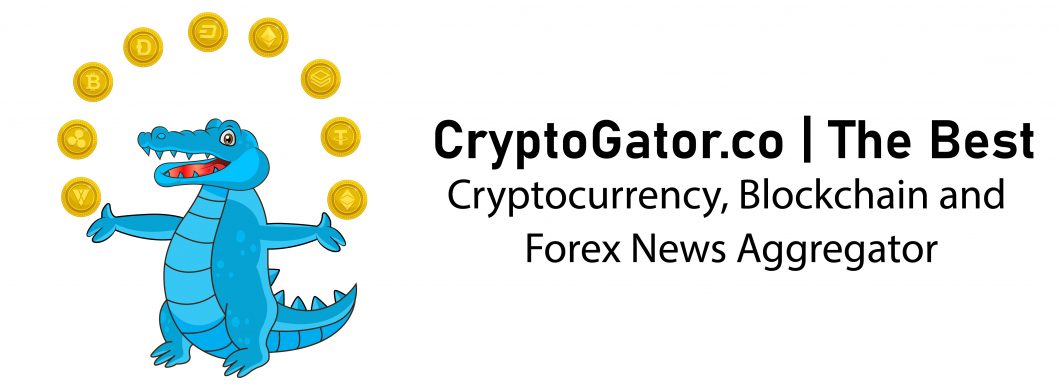<p class=”MsoNormal”>Over the last five years cryptocurrencies have exploded at an unprecedented rate, but so have the different methods of making income in the cryptocurrency world. No longer do investors have to simply rely on trading to make a profit from crypto. </p><p class=”MsoNormal”>Now, crypto enthusiasts can contribute to blockchains through PoS (Proof of Stake), provide liquidity to pools, and extract the best possible yields through farming. The possibilities are almost endless and ever-expanding for investors wanting both passive and active income-generating activities.</p><p class=”MsoNormal”>With such great returns available to be made in the cryptocurrency world, analyzing the opportunity cost of each option is the best way to find a route that suits you.</p><p class=”MsoNormal”>Let’s discuss the differences between Yield Farming, Staking and Liquidity Mining.</p><p>What Is Yield Farming?</p><p class=”MsoNormal”>Yield farming is the act of generating rewards such as interest and cryptocurrency by staking assets on dApps through a DeFi platform. The cryptocurrency is locked up for a certain period of time and acts as liquidity for lending, borrowing and trading.</p><p>Automatic Market Makers (AMMs)</p><p class=”MsoNormal”>A key concept for yield farming is AMMs, which <a href=”https://www.financemagnates.com/fintech/prime-time-liquidity-between-retail-and-institutional-trading/” target=”_blank”>liquidity </a>pools are essential for, where many yield farmers staked cryptocurrency is stored. Automatic market makers allow automatic and permissionless trading for their users, instead of traditional buyers and sellers systems, used in centralized exchanges.</p><p>What Is Liquidity Mining?</p><p class=”MsoNormal”>Liquidity mining is a form of yield farming and another DeFi lending protocol, where users will stake their cryptocurrency into a pool to be used by other users. Liquidity mining rewards are focused on receiving coins from the platform they are ‘lending’ on, hedging their bets that their value will increase in the future.</p><p class=”MsoNormal”>Like any liquidity pool, providers are rewarded based on the amount of the liquidity pool they provided for.</p><p>What Is Staking?</p><p class=”MsoNormal”>Although staking, yield farming and liquidity mining can often be used interchangeably, there are some key differences. Staking is often seen as the simplest of the three and the most accessible to the average crypto enthusiast. </p><p class=”MsoNormal”>Staking is the act of locking up your cryptocurrency for a defined or undefined period of time to obtain rewards, usually interest.</p><p class=”MsoNormal”>Most staking protocols come with specific lock-up rules to ensure liquidity is confirmed for a certain period of time. Staking is the backbone of the PoS (Proof of Stake) model, allowing individual investors to contribute to the blockchain with their cryptocurrency by staking it through validators. </p><p class=”MsoNormal”>Validators ensure each transaction is secure without a regular third party, like a bank. Unlike the Proof of Work model, which is used in bitcoin, PoS is a lot less resource-intensive and efficient. </p><p>What’s the Difference Between Yield Farming, Staking, and Liquidity Mining?</p><p>Staking</p><p class=”MsoNormal”>Maybe the biggest difference between <a href=”https://www.financemagnates.com/cryptocurrency/the-next-blockchain-technologies-that-will-revolutionize-smart-contracts/”>Staking</a>, yield farming and mining is where you can provide liquidity. Staking, as it’s used as the core validating method for many cryptocurrencies is available almost everywhere. </p><p class=”MsoNormal”>Big, centralized exchanges or CEXs, such as Binance allow their users to simply provide the crypto required for the stake, and they will configure the rest. This allows for hands-off staking and extremely ‘passive’ income. </p><p class=”MsoNormal”>Also, staking has a lower barrier to entry, many users can stake as little as one USD to start earning rewards.</p><p class=”MsoNormal”>Safety: Well over $100 billion in crypto assets are currently being staked, as they are the backbone of many cryptocurrencies, unlike yield farming and liquidity mining which operate on more niche or less used platforms. With this massive participation comes safety. </p><ul type=”disc”><li class=”MsoNormal”>You are much less likely to lose money staking, although it is possible.</li><li class=”MsoNormal”>Rewards can be completely passive</li><li class=”MsoNormal”>Complex strategies are not required</li></ul><p>Yield Farming</p><p class=”MsoNormal”>Yield farming when done properly is a lot more hands-on than traditional staking. Investors’ crypto is still being ‘staked’ but can only be done on DeFi platforms, such as Pancake swap or Uni swap. </p><p class=”MsoNormal”>Yield farming operates on smaller blockchains to help provide liquidity, creating much more risk potential.</p><p class=”MsoNormal”>With this extra effort comes an extra reward. Yield farmers can receive a cut in transaction fees and token rewards on top of their usual interest, making the potential APY a lot more lucrative. </p><p class=”MsoNormal”>However, for yield farmers to truly maximize their earnings, in the spirit of a yield farmer, they can change pools as often as weekly and are constantly readjusting their strategies to maximize earnings.</p><p class=”MsoNormal”>As you can see, yield farming has a higher barrier to entry than staking and liquidity mining, especially when participating in pools run on chains with high fees, such as ERC-20.</p><p>Liquidity Mining</p><p class=”MsoNormal”>Liquidity mining directly helps keep blockchain technology decentralized. The main difference is the rewards received. Liquidity miners will often receive the native token of the blockchain as a reward and have a chance to earn governance tokens, giving them a vote on any new legislature, empowering each individual.</p><p>The Risks Involved with DeFi</p><p class=”MsoNormal”>As traditional staking can be completed on centralized exchanges, like staking your CRO on crypto.com they are less vulnerable to the downsides of DeFi. However, staking is the basis of yield farming and liquidity mining, so the risks listed below are able to occur on any DeFi protocol. Staking is also mainly done on DeFi protocols, only recently becoming more mainstream with big exchanges offering the option. Here are the biggest risks you should be aware of as a potential user:</p><ul type=”disc”><li class=”MsoNormal”>Exit Scams: Providing liquidity on new blockchains means exit scams such as rug pulls are more common and harder to foresee. </li></ul><ul type=”disc”><li class=”MsoNormal”>Smart Contract Exploits: Bugs in smart contracts can be abused to take funds from liquidity providers.</li></ul><ul type=”disc”><li class=”MsoNormal”>Information asymmetry: There is no centralized body regulating information that most investors are used to. Although DeFi creates a trustless and permisionless space for investors, great information asymmetry can promote distrust in users while combining with the anonymity of crypto creates a marketplace rife with scams.</li></ul><ul type=”disc”><li class=”MsoNormal”>Impermanent Loss: Can happen when the liquidity you provided is worthless at the time of withdrawal than when you put it in the pool. Liquidity is often locked for a set period of time, anything can happen in the crypto market during that time.</li></ul><p>Are there Any Risks in Staking?<h2< h2=””></h2<></p><p><h2< h2=””></h2<>Staking may seem like the obvious option after reading the risks of DeFi protocols and the ease of rewards. However, nothing in crypto is risk-free! All methods of locking up <a href=”https://www.financemagnates.com/cryptocurrency/” target=”_blank”>cryptocurrency</a> come with the risk of impermanent loss, meaning the cryptocurrency that you have staked has decreased in value compared during the lock-up period, compared to the amount of interest received. </p><p>Also, most users will not become validators and only provide their liquidity to a validator of their choosing. Validators are open to slashing events, a process that occurs to punish validators for wrong behavior. Slashing events, depending on the rules, will slash a certain percentage or status amount of cryptocurrency as punishment.</p><p>Best Rewards: Yield Farming, Staking, or Liquidity Mining? </p><p class=”MsoNormal text-align-start”>There is no one size fits all for <a href=”https://www.financemagnates.com/cryptocurrency/education-centre/everything-you-need-to-know-about-crypto-yield-farming/” target=”_blank”>staking, yield farming or liquidity mining</a>. Returns depend almost completely on the individual’s ability to find the best stakes or farms and their process of re-allocating rewards from their stakes.</p><p class=”MsoNormal”>Also, luck and diversification play a huge role in the success of any crypto investor, with staking, yield farming and liquidity mining being no different. </p><p class=”MsoNormal”>With any type of investing, the attitude the investor has towards risk also plays a massive role in the potential gain. Staking, for example, can be extremely lucrative when compared to other interest-receiving investments such as dividends. </p><p class=”MsoNormal”>Already, you can stake cryptocurrency relatively safely, for crypto standards, for great double-digit APY, unheard of outside the crypto world. So, many investors should be happy with that return and with enough capital can make a large weekly return by staking cryptocurrencies with big backing, such as CRO.</p><p class=”MsoNormal”>Knowing what you want from your investments is key in the staking world. Yield farmers are naturally going to pursue the highest yields possible, many simply for bragging rights, so always focus on what your goals are and zero in on them.</p><p class=”MsoNormal”>You should always do your own research before blinding jumping into what seems like a great opportunity, especially in the land of DeFi.</p><p>Great Platforms to Start Staking</p><ul type=”disc”><li class=”MsoNormal”>Nexo: Up to 8.5% APR while staking <a href=”https://www.financemagnates.com/tag/bitcoin/” target=”_blank”>Bitcoin</a>. Being able to receive such massive rewards from the largest and safest best in the crypto world is a gem many investors are missing.</li><li class=”MsoNormal”>Crypto.com: Crypto Visa card options with up to 10% APR, paid weekly. Crypto.com offers several great options for staking their native currency, CRO, and many others with easy access to DeFi with their friendly DeFi wallet app.</li><li class=”MsoNormal”>Kraken: Great platform with a great pool of stakable currencies to choose from, with a great reputation for security and privacy.</li></ul><p>Yield-Farming and Liquidity Mining</p><p class=”MsoNormal”>All yield-farming and liquidity are done through DeFi, meaning you must interact with a decentralized exchange, so it’s important you do your own research before jumping in. The rewards can be high, but so are the stakes. Some of the most trusted DeFi platforms to start your yield farming or liquidity mining journey include:</p><ul type=”disc”><li class=”MsoNormal”>Pancake Swap</li><li class=”MsoNormal”>Sushi Swap</li><li class=”MsoNormal”>1inch</li><li class=”MsoNormal”>Uniswap</li><li class=”MsoNormal”>Curve Finance</li></ul><p>Conclusion</p><p class=”MsoNormal”>Making the best investment in a growing and everchanging market like cryptocurrency can be paralyzing. Ensuring you are receiving the best rewards with the lowest rate can create too many options that investors chose none. </p><p class=”MsoNormal”>Most importantly, investors should consider their risk tolerance as the number one factor guiding their investment choices. In the world of cryptocurrency staking and yield farming, especially on DeFi, the higher the potential rewards, the less likely that option will be viable for a long time. </p><p class=”MsoNormal”>Decide what factors are most important to you, whether that be security or passivity, create a game plan and execute.</p><p>FAQ</p><p>Is Yield Farming the Same as Staking?</p><p class=”MsoNormal”>While these techniques sound similar there are some differences between yield farming and staking. Staking is most commonly used as a validating method for many cryptocurrencies is available almost everywhere. </p><p class=”MsoNormal”>In addition, staking has a lower barrier to entry relative to yield farming, many users can stake as little as one USD to start earning rewards.</p><p>Is Yield Farming Profitable?</p><p class=”MsoNormal”>Anything that is profitable carries a degree of risk and each individual has to reconcile these two. Yield farming can be profitable with the right timing and luck. </p><p>Is Yield Farming Worth It?</p><p class=”MsoNormal”>Every individual has to decide for themselves if the style of investing is worth it and yield farming is no exception. There are plenty of examples of people who have made thousands, or lost fortunes. </p><p>Is Yield Farming Safer Than Staking?</p><p class=”MsoNormal”>Staking is a safer option, namely given the degree of risk involved. Yield farming carries a large degree of risk given so much volatility that can crop up out of nowhere in the form of rug pulls or other forces.</p>
This article was written by Finance Magnates Staff at www.financemagnates.com.



